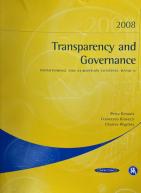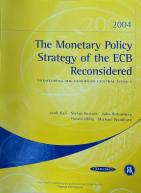Monitoring the European Central Bank
MECB 3: Defining a Macroeconomic Framework for the Euro Area
This report addresses six main issues as follows:
1. The ECB should abandon the �Two Pillars� and adopt a simple inflation targeting strategy. Keeping inflation in check is the ultimate goal of the ECB: it is hard to see why the growth rate of M3 should have a special role, which goes beyond that accorded to many other indicators. The M3 pillar increasingly stands in the way of effective communication. Inflation targeting should be presented to the public for what t is: an �employment-friendly� monetary strategy. In fact inflation targeting is just a way of setting monetary policy so as to keep output close to potential while keeping inflation close to its target.
2. Monetary and fiscal policies in Europe are set independently. Is this a problem? Is there a need for an explicit coordination of monetary and fiscal policies in EMU? The report�s answer is: No. If the monetary and fiscal authorities �keep their houses in order� acting on their own, there is no need for explicit coordination. If the fiscal authorities deviate from �prudent� fiscal policies because of a variety of short run political incentives and constraints, then explicit coordination may even be counterproductive. What about national fiscal authorities?. Should the 12 finance ministers coordinate their policies? If one could be sure that in each country fiscal policy decisions were shielded from short term political incentives, coordination would certainly make sense. But coordination may also reduce the political cost of incorrect policy actions, thus making them more attractive.
3. Should the ECB worry about inflation differentials among EMU members? The report argues that inflation differentials should not be demonized. In a common currency area inflation differentials are the mechanism for adjusting real exchange rates, when adjustment is needed. For a country belonging to a currency union having higher inflation than the average may thus be entirely appropriate. After convincing citizens that inflation was bad, governments and the ECB must now go to step two, and explain that temporary inflation differentials can be desirable, leading to higher real income and the proper macroeconomic adjustment.
4. How does the ECB make interest rate decisions? The report shows that the interest rate decisions made over the past two years appear to be best described by a �hybrid rule�: The ECB sets interest rates responding quite aggressively to both �core� inflation and the inflation �forecast�.
5. Should the ECB worry about the exchange rate of the euro? The ECB should help cooling off the exchange rate obsession of Europeans. For some reason, the public seems to believe that the success of the Euro can be measured by its value vis-�-vis the dollar. Explaining to the public that a successful currency is one that produces low inflation, not one that produces high exchange rates, is a good strategy.
6. Are the inflation projections now published by the ECB a good idea and are they done right? For reasons of logical consistency as well as for showing the interesting dimensions of uncertainty, not the uninteresting ones, the ECB should produce inflation forecasts using the predicted paths of interest rates, given the actual ECB policy of trying to keep in inflation in check. This is not the way such forecasts are currently produced.


